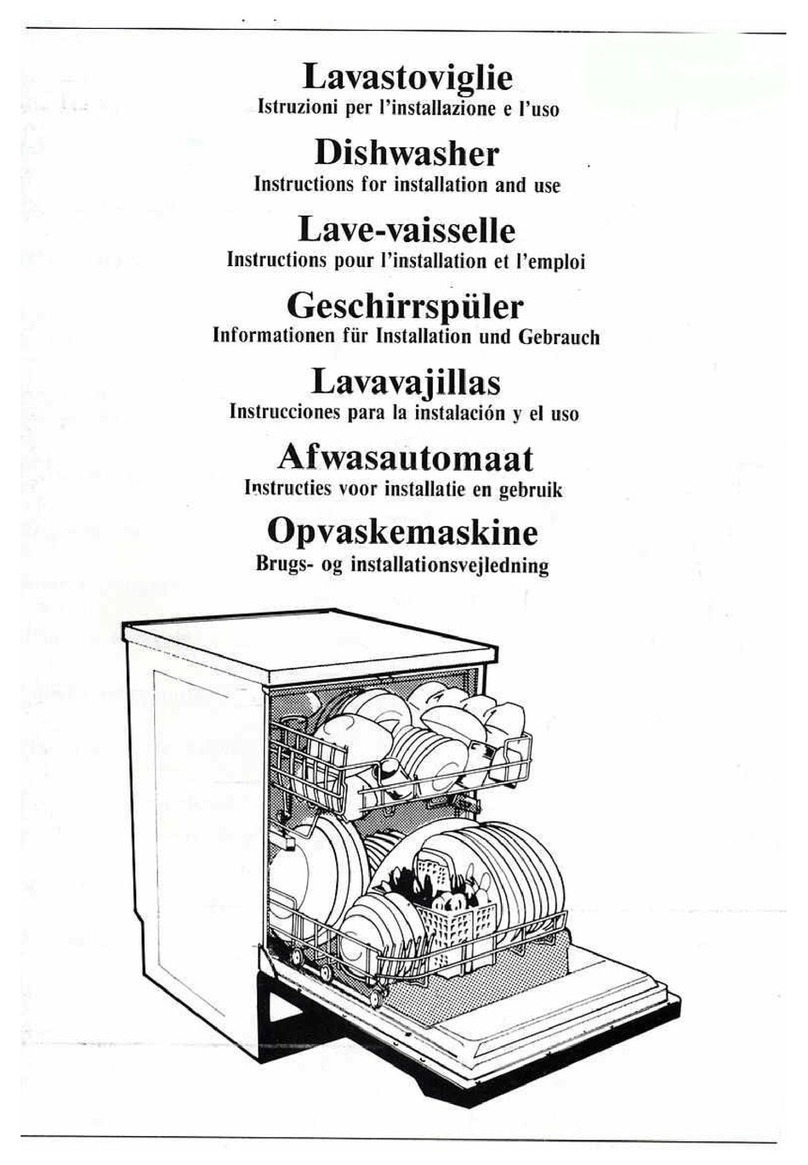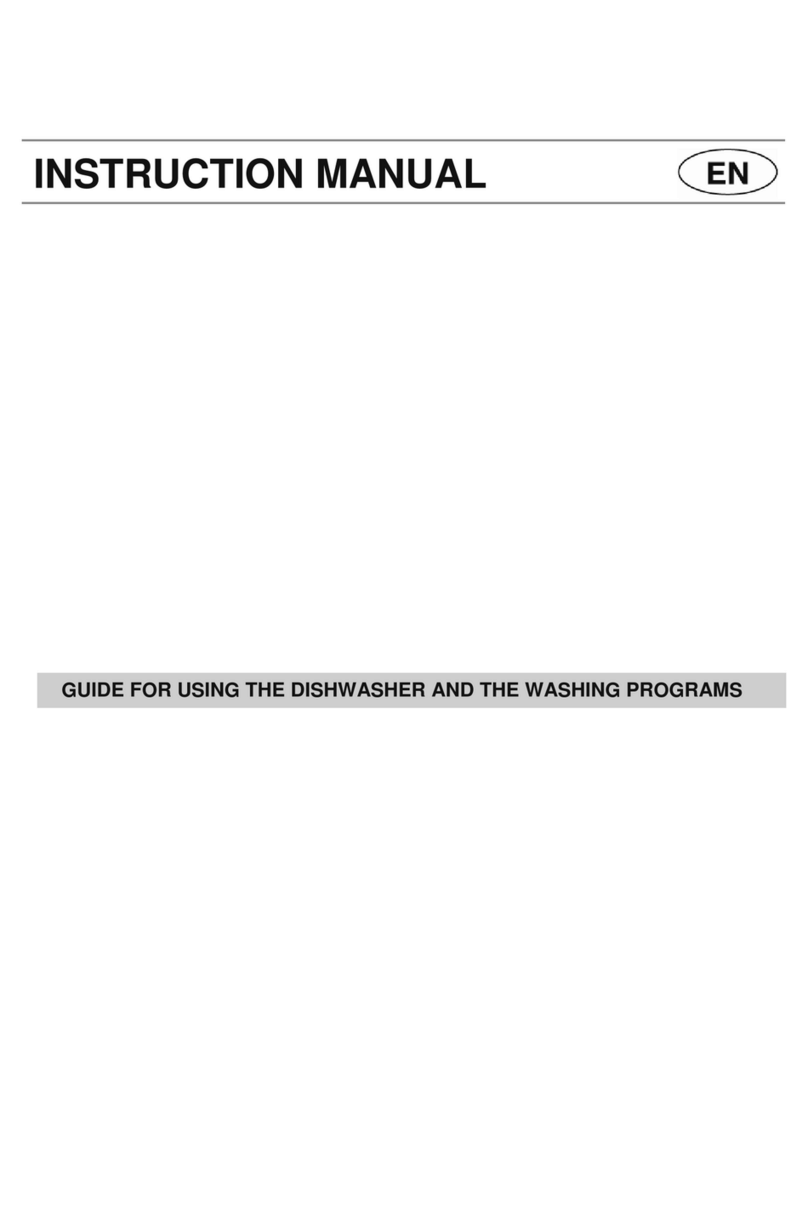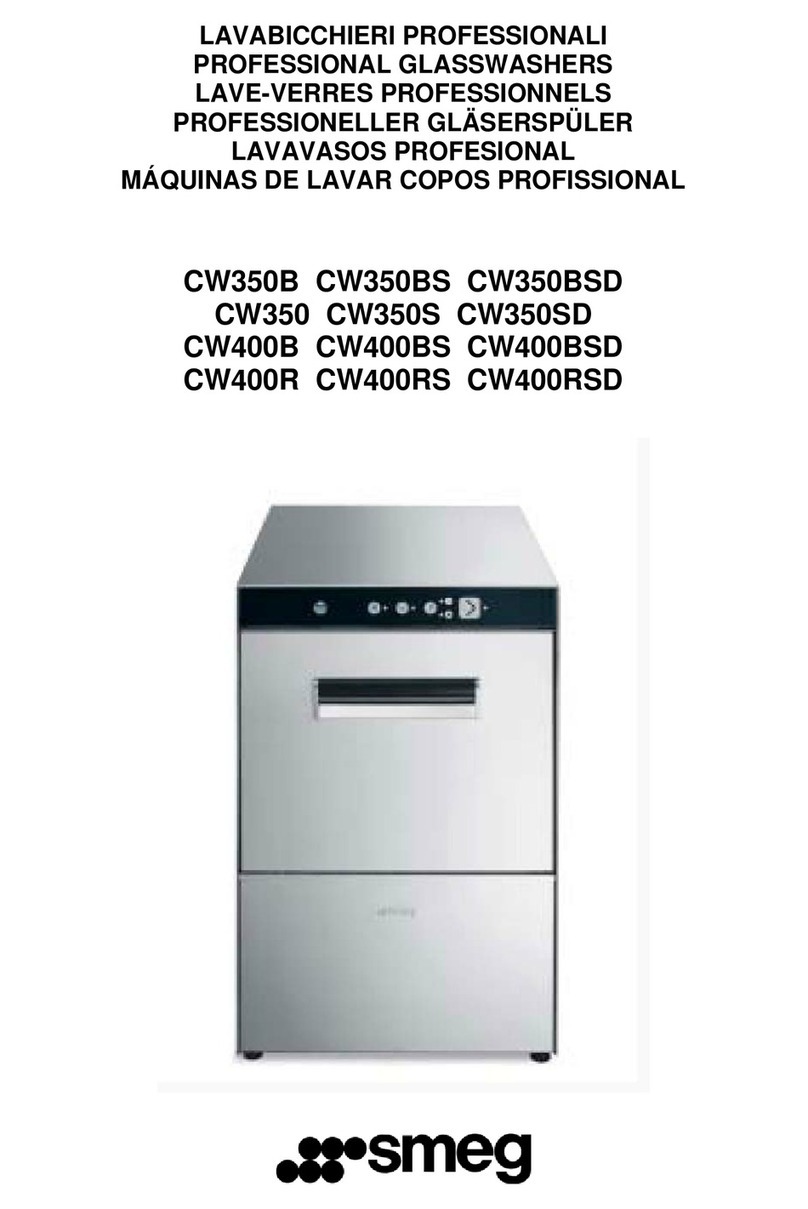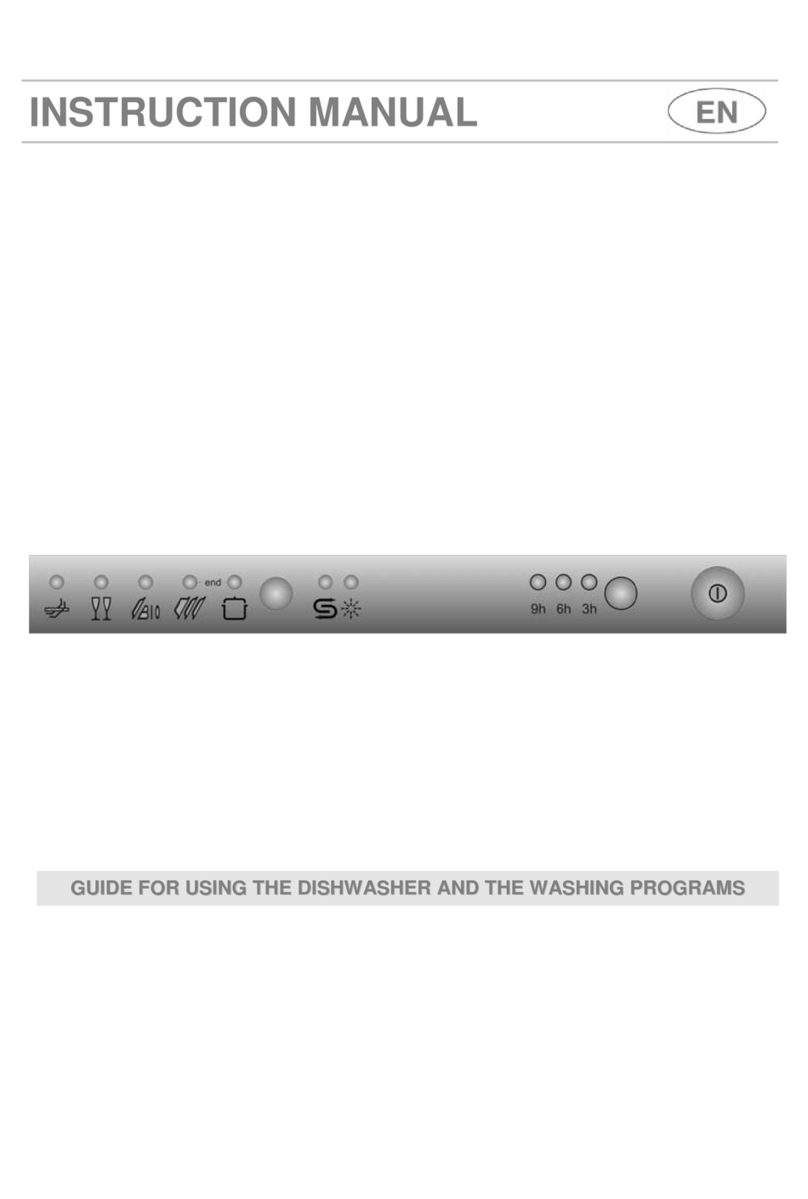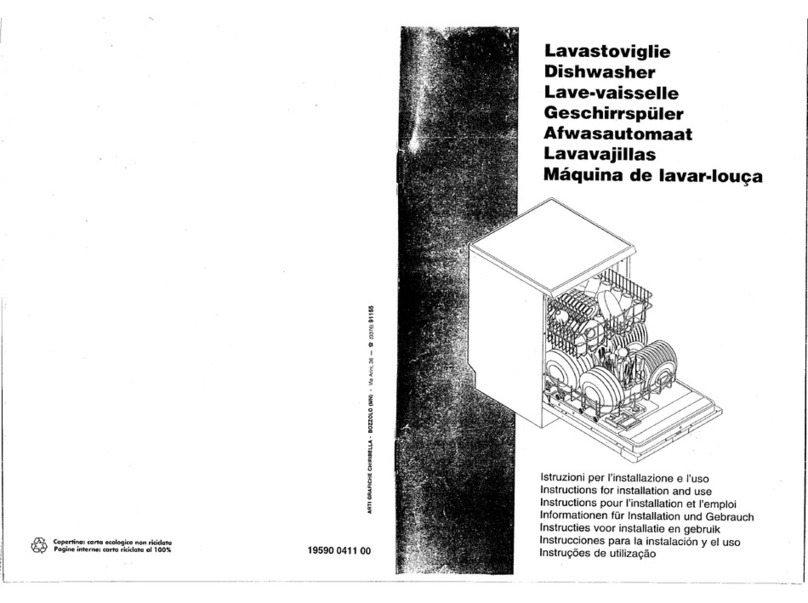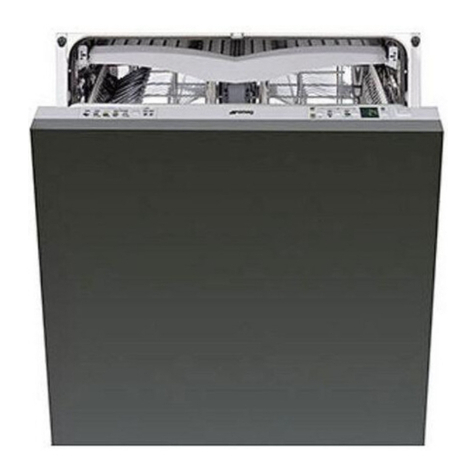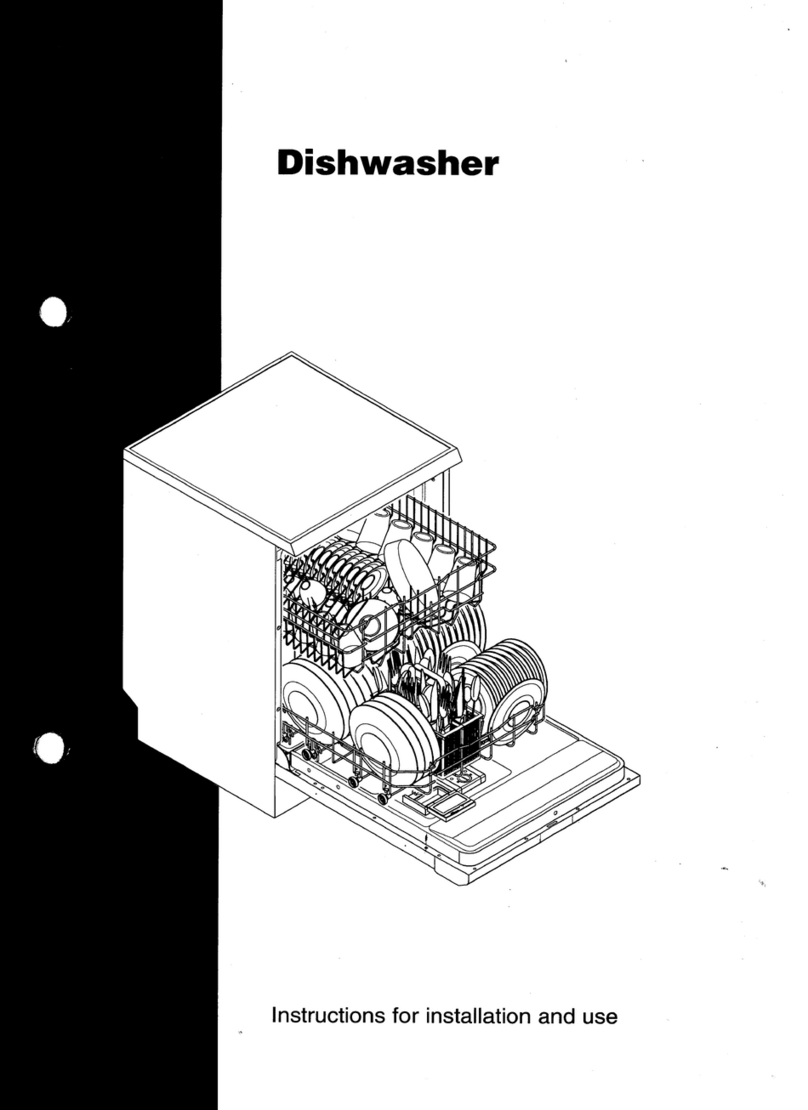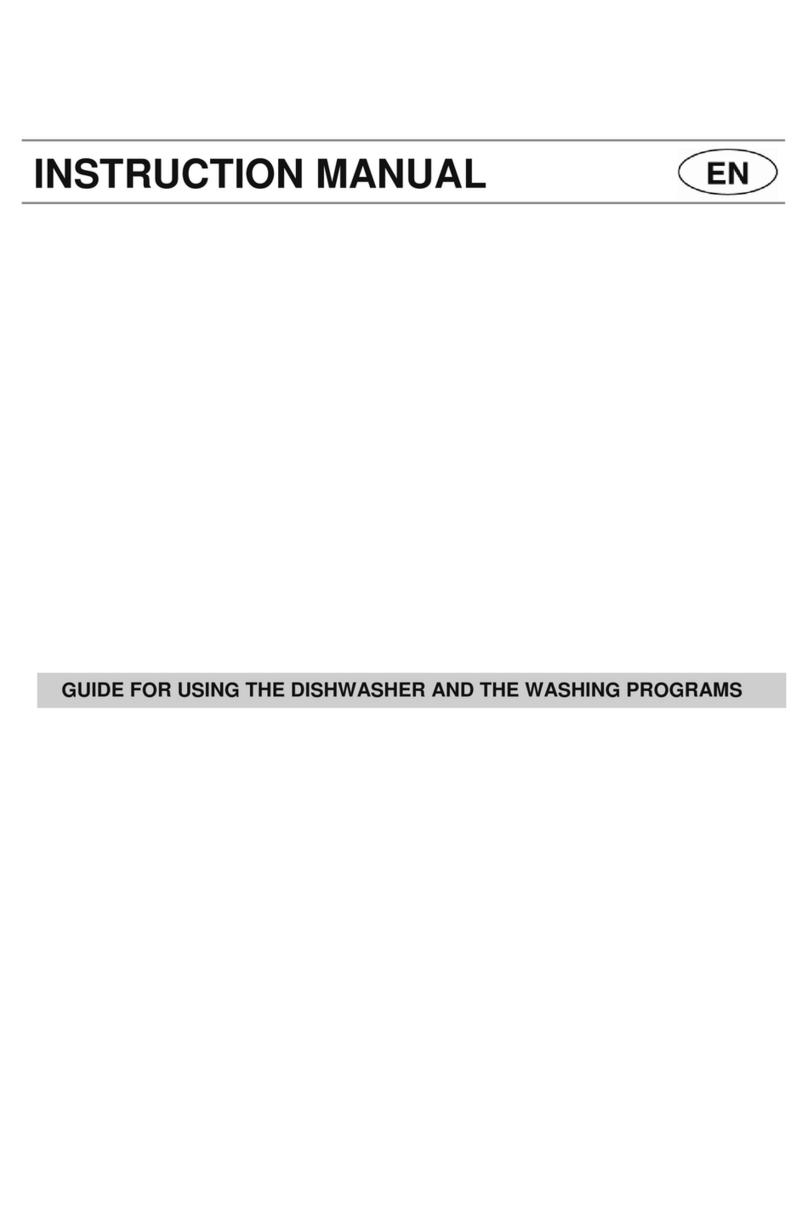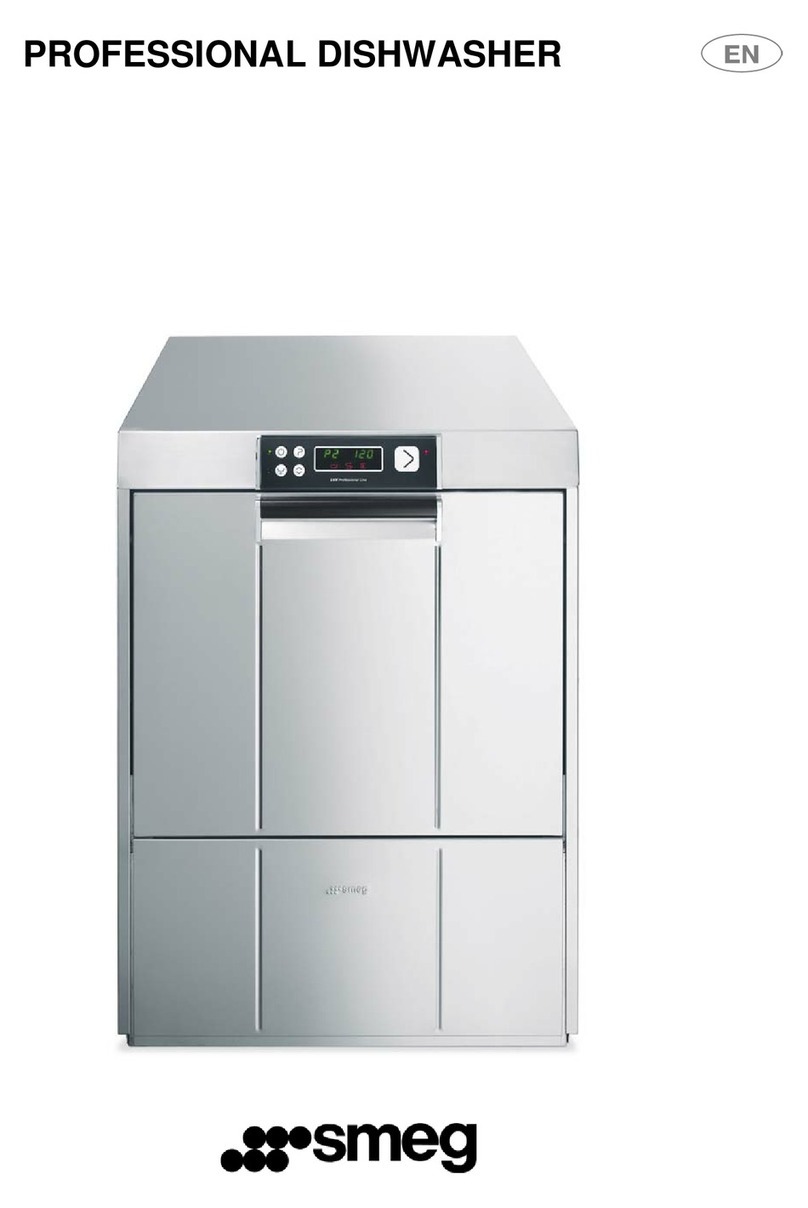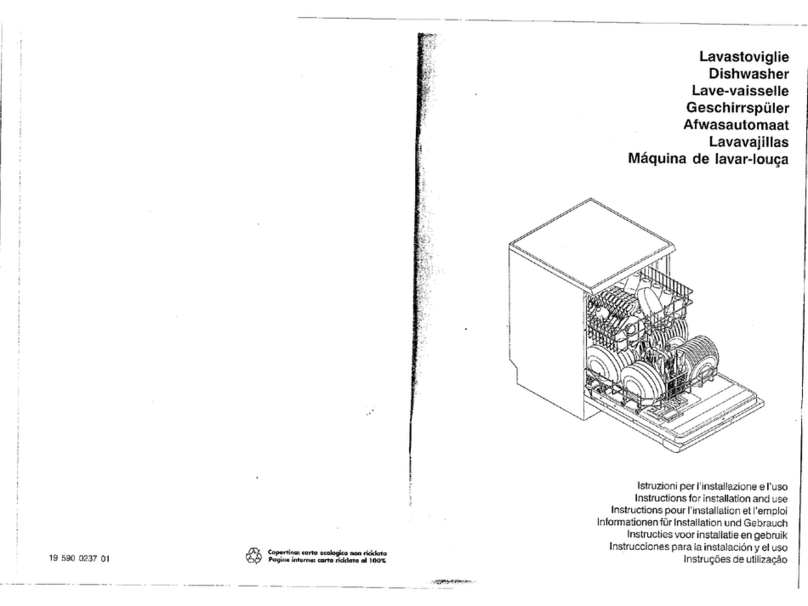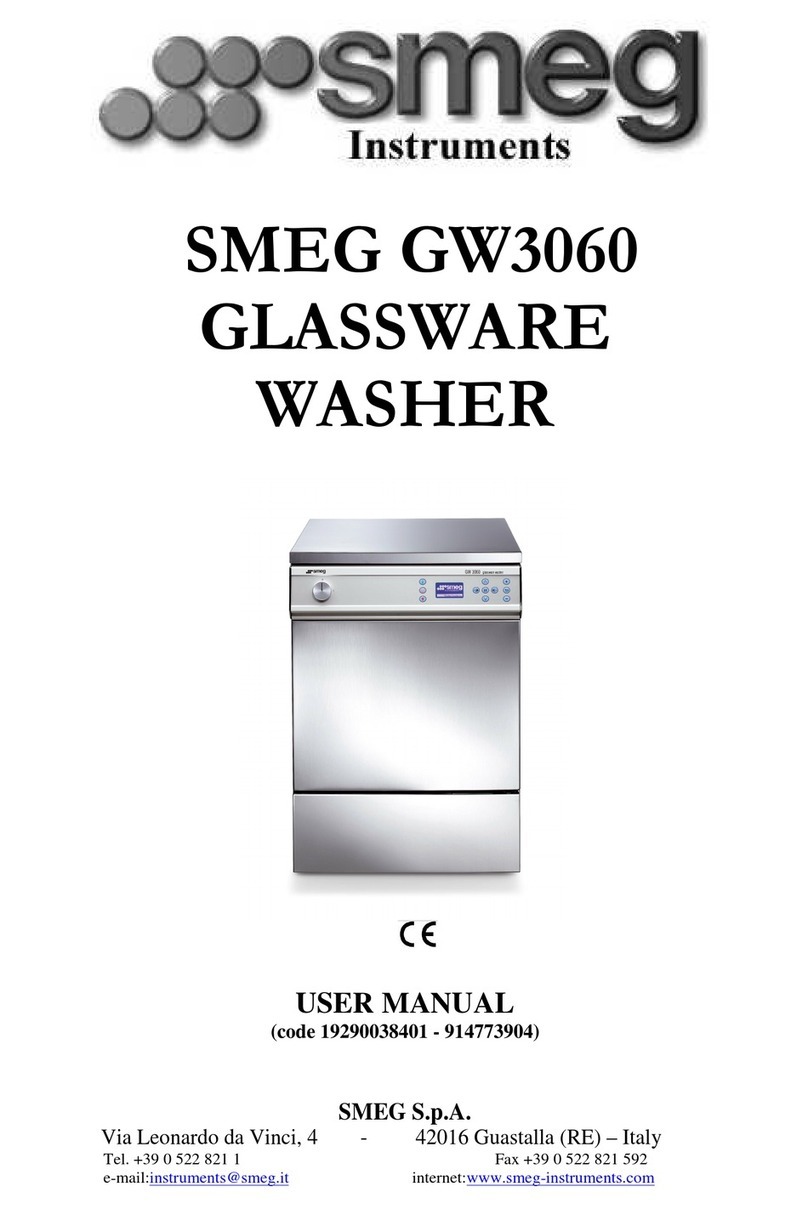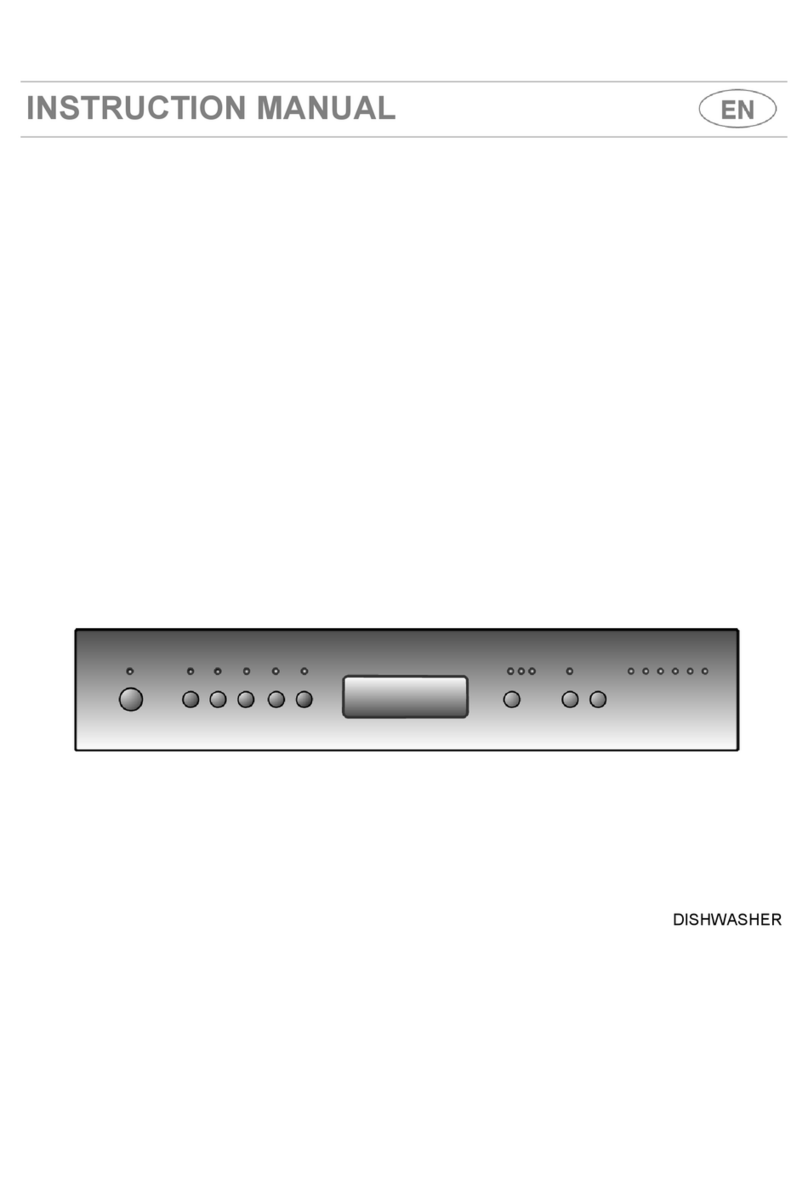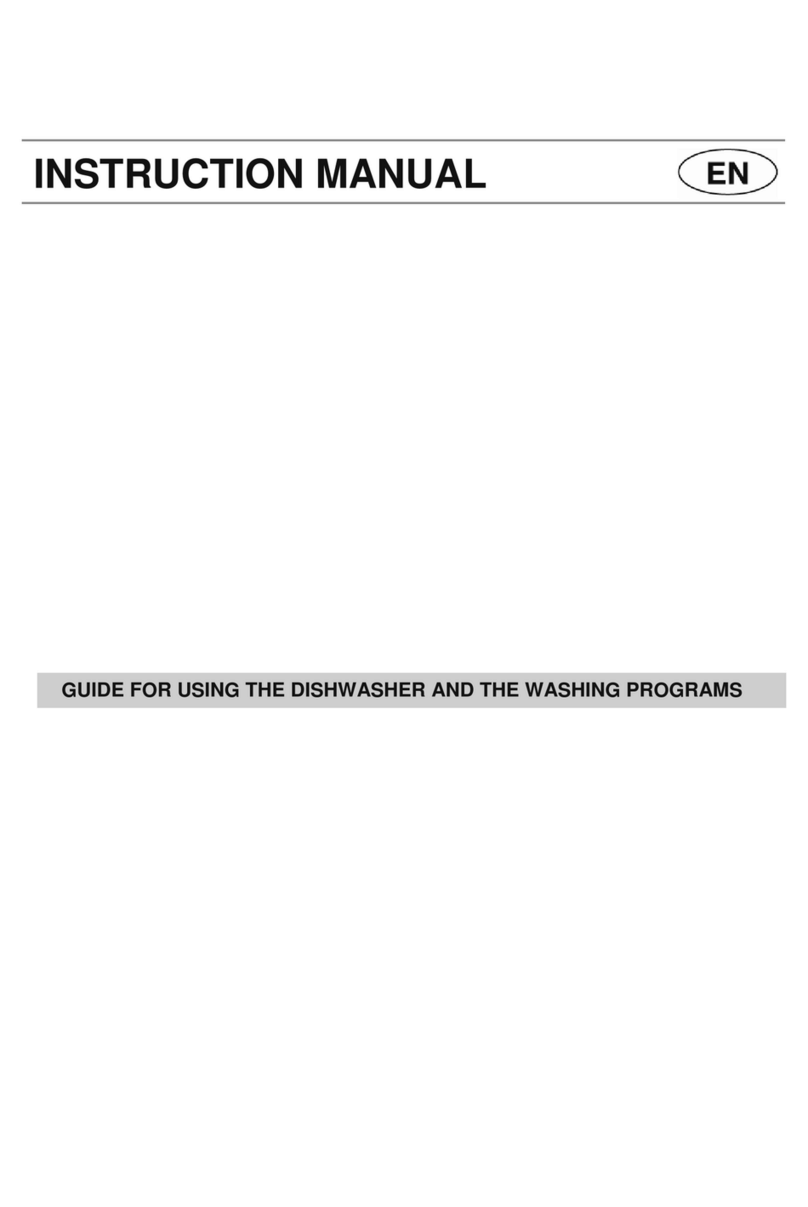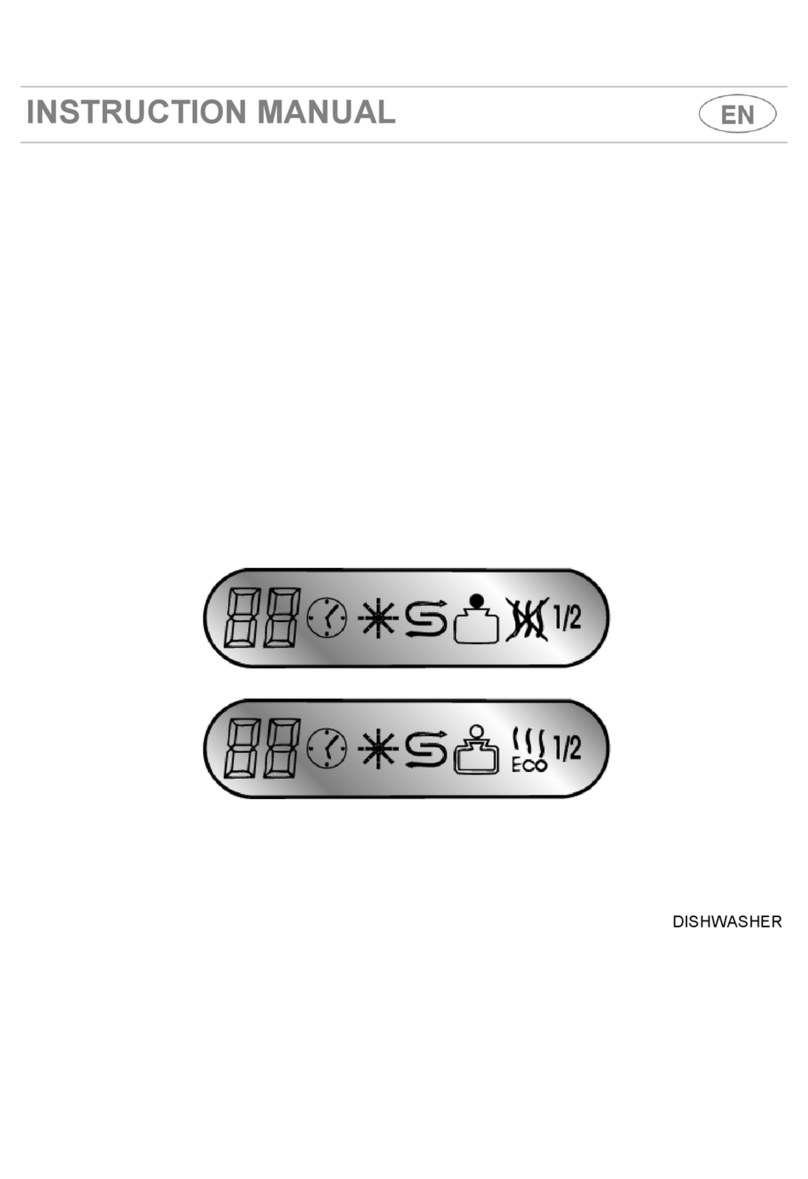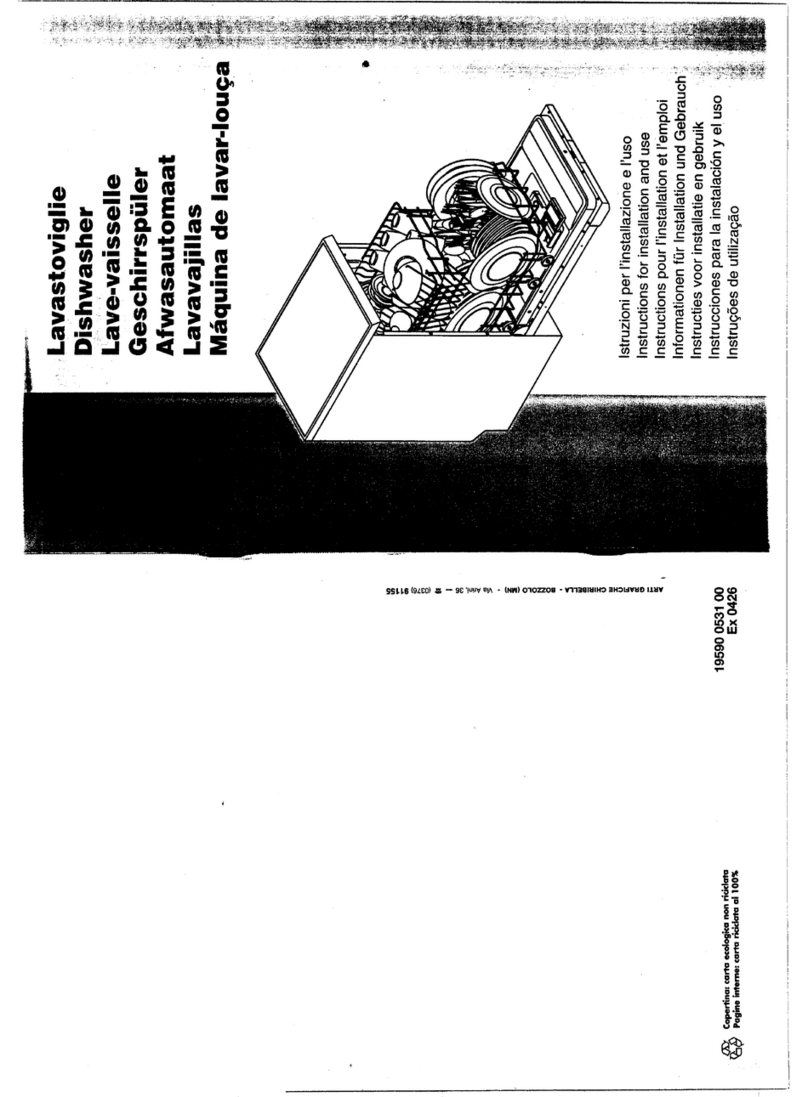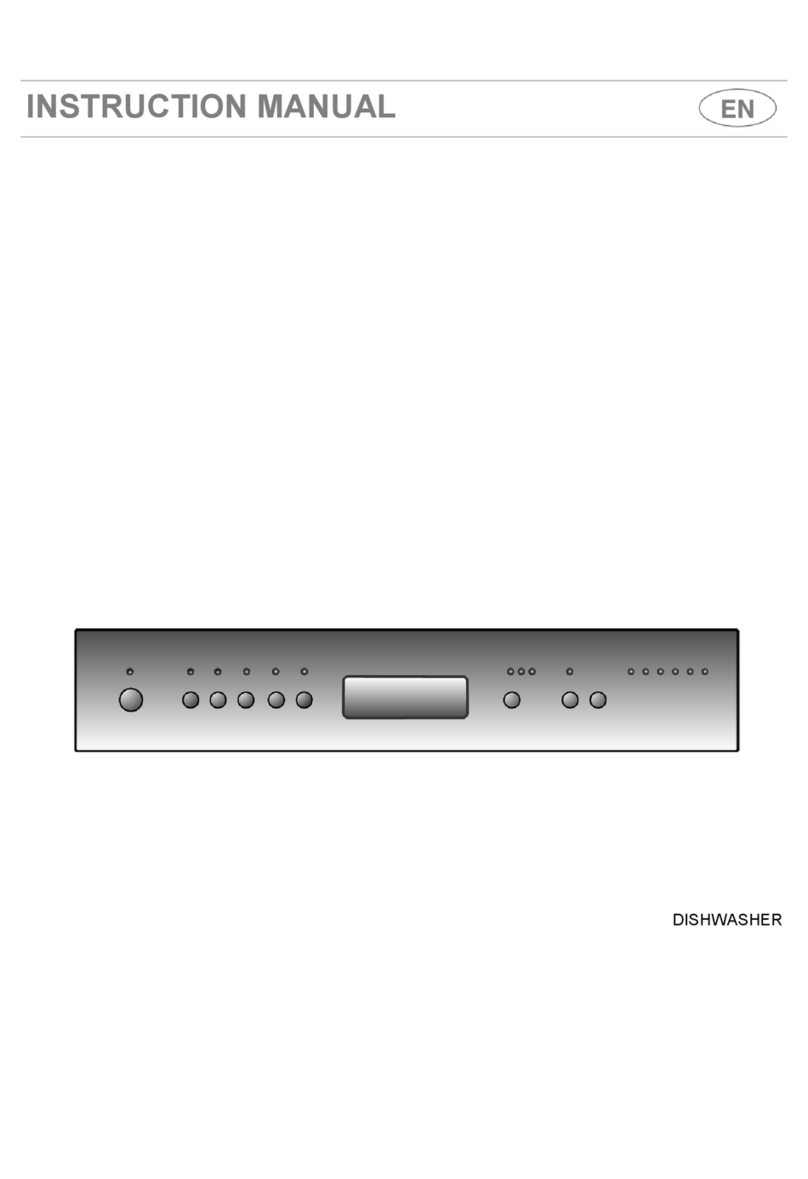User instructions
CHANGING THE PROGRAM
To change the program in progress the dishwasher must be switched off
by pressing the ON/OFF key (2).
Turn the program selector to the program required and then switch the
dishwasher on again by pressing ON/OFF key (2). The dishwasher will
carry out the new program automatically.
TO SAVE ON ENERGY! … AND PROTECT THE ENVIRONMENT
•Always try to run the dishwasher fully loaded.
•Do not wash the dishes in running water.
•Use the washing program that is most appropriate for each type of
load.
•Do not carry out any preliminary rinsing.
•If available, connect the dishwasher to a hot water supply up to 60°C.
•When possible, disable the drying cycle and leave the door open at
the end of the washing cycle: the residual air and heat will dry the
dishes perfectly.
TO CUT DOWN ON DETERGENT CONSUMPTION! … AND PROTECT
THE ENVIRONMENT
The phosphates contained in dishwasher detergents are harmful to the
environment. To avoid using excessive amounts of detergent and to save
on electricity, observe the following:
•separate the more delicate items from dishes that are more resistant
to aggressive detergents and high temperatures;
•do not pour the detergent directly on the dishes.
